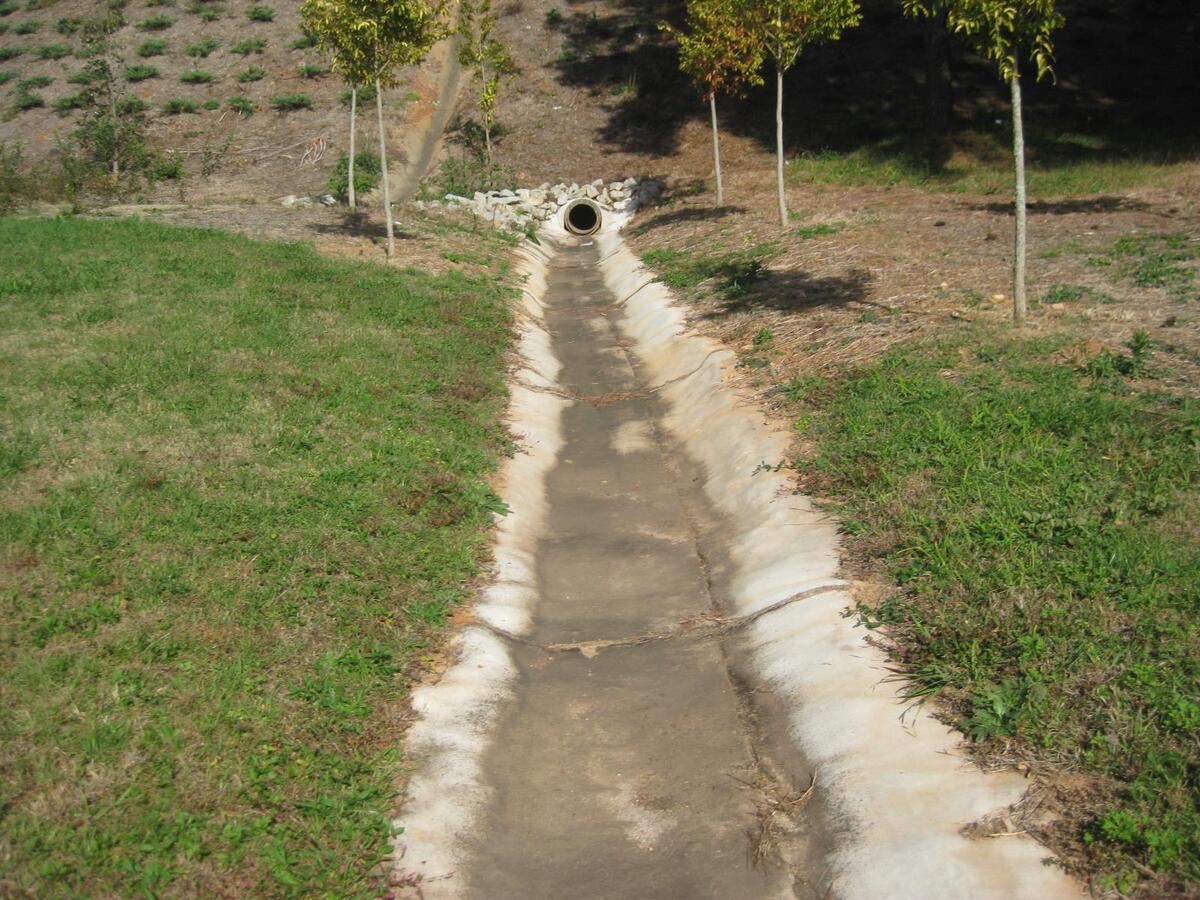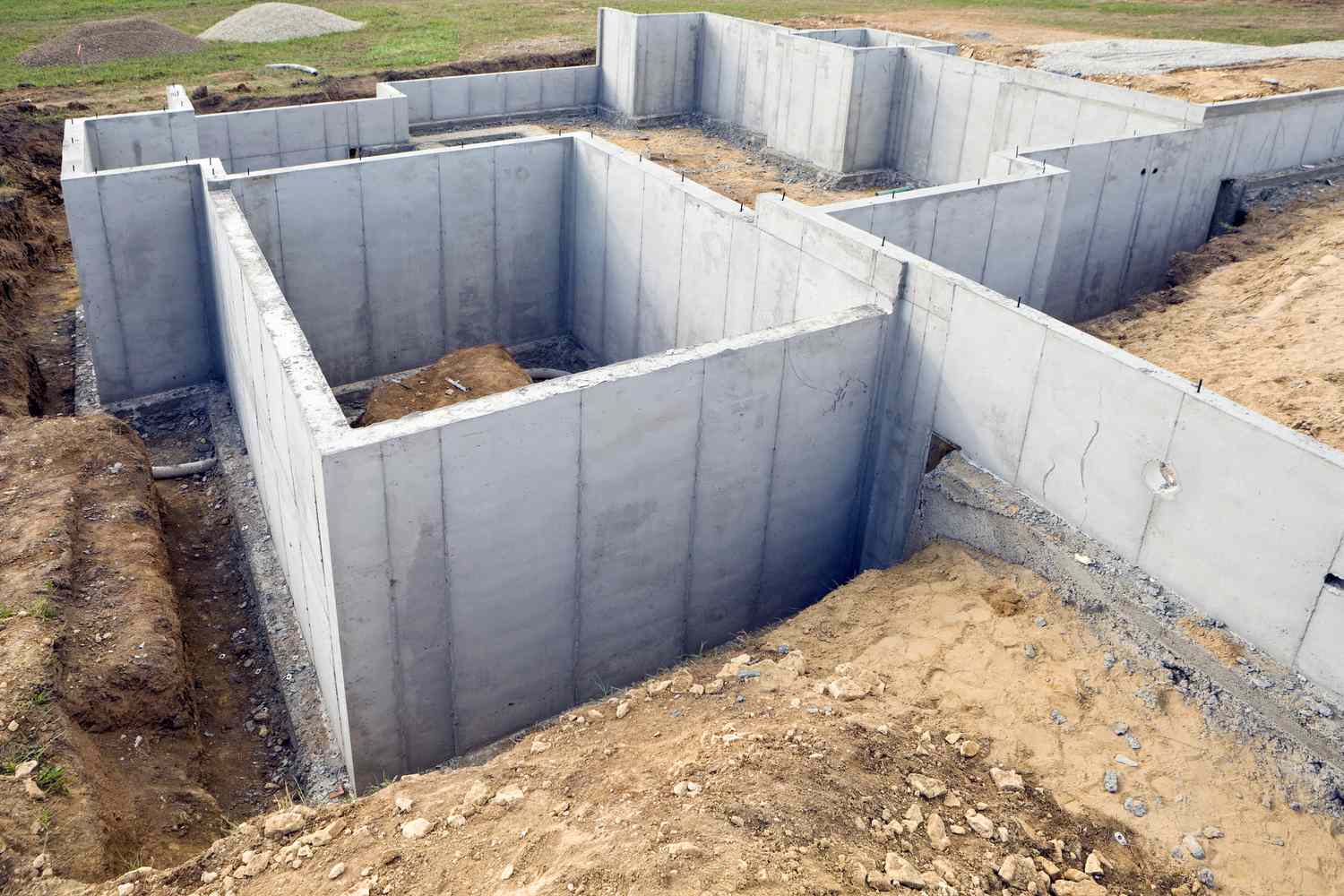Home>diy>Building & Construction>What Is A Tender Process In Construction?


Building & Construction
What Is A Tender Process In Construction?
Modified: December 7, 2023
Learn about the tender process in building construction and how it plays a crucial role in project selection and procurement. Gain insights into the steps involved and key considerations.
(Many of the links in this article redirect to a specific reviewed product. Your purchase of these products through affiliate links helps to generate commission for Storables.com, at no extra cost. Learn more)
Introduction
Welcome to the world of construction, where every building begins with a well-planned and meticulously executed tender process. The tender process is an essential step in the construction industry, ensuring that the right contractors are selected for the job. In this article, we will explore the ins and outs of the tender process in construction, its significance, and the key steps involved.
Whether you are a homeowner, a property developer, or a construction professional, understanding the tender process is crucial in securing the best contractors for your project. By following a structured and transparent approach, the tender process helps to promote fair competition and allows for a thorough evaluation of contractors’ capabilities and qualifications.
The tender process involves a series of steps, from preparing the tender documentation and advertising the tender to receiving and evaluating tender submissions. The ultimate goal is to award the contract to the most suitable contractor, based on their expertise, experience, and competitive pricing.
Let’s dive into the world of tender processes in construction, where bids are submitted, contracts are awarded, and dreams are translated into magnificent structures.
Key Takeaways:
- The tender process in construction ensures fair competition, transparency, and accountability in selecting qualified contractors, leading to successful project outcomes.
- Key steps in the tender process include preparing comprehensive tender documentation, issuing and advertising the tender, thorough evaluation of tenders, and awarding the contract to the most suitable contractor.
Read more: What Is The Construction Process
Definition of a Tender Process in Construction
The tender process in construction refers to the methodical and systematic approach used to invite and evaluate bids from contractors for a construction project. It is a formal process that allows project owners or clients to solicit competitive offers from multiple contractors, giving them the opportunity to assess and compare proposals based on various factors such as price, experience, qualifications, and approach.
The tender process acts as a mechanism to ensure transparency, fairness, and accountability in the selection of contractors. It provides an equal opportunity for all interested parties to compete for the project while adhering to established rules and regulations. The process is typically governed by contractual requirements, industry standards, and legal obligations.
The tender process begins with the project owner or client preparing detailed tender documentation, including project specifications, drawings, scope of work, and contract terms. This documentation serves as a blueprint and guide for contractors to understand the project requirements and prepare their bids accordingly.
Once the tender documentation is finalized, it is advertised to invite interested contractors to submit their bids. The advertisement may be published in industry publications, newspapers, government portals, or online platforms. The purpose of advertising the tender is to reach a wide range of potential contractors, ensuring maximum competition and a diverse pool of applicants.
Contractors who wish to participate in the tender process must submit their bids within the specified deadline. The bids typically include detailed pricing information, proposed project timeline, technical qualifications, and other relevant documentation requested in the tender documents. The information provided allows the project owner or client to evaluate each bid comprehensively.
Once all the bids have been received, the project owner or client begins the process of evaluating and comparing the submissions. This evaluation process involves assessing the bids based on predetermined evaluation criteria, which may include factors such as price, experience, capabilities, track record, financial stability, and ability to meet project requirements.
After thorough evaluation and consideration, the project owner or client selects the most suitable contractor and awards them the contract. This decision is typically based on a combination of factors, including price competitiveness and the contractor’s ability to meet the project’s technical and quality requirements.
The tender process in construction ensures that projects are awarded to qualified and capable contractors, promoting fair competition and the selection of the best candidate for the job. By following a structured and transparent process, both project owners and contractors benefit from a level playing field, resulting in successful project outcomes.
Importance of the Tender Process in Construction
The tender process plays a crucial role in the construction industry, serving various important purposes for both project owners or clients and contractors. Let’s explore some of the key reasons why the tender process is vital in construction projects.
Fair Competition: The tender process ensures fair competition among contractors, allowing them to showcase their capabilities and compete for the project based on their qualifications, experience, and pricing. This promotes transparency and eliminates favoritism, ensuring that the best contractor is chosen for the job.
Quality Standard: By inviting bids from multiple contractors, the tender process allows project owners or clients to evaluate the quality of work provided by different contractors. This helps in maintaining the desired standard of quality for the construction project.
Cost Optimization: The tender process enables project owners or clients to compare and evaluate bids from different contractors, helping them identify the most cost-effective proposal. This allows for cost optimization and ensures that the project is awarded to a contractor who offers competitive pricing without compromising on quality.
Access to a Pool of Contractors: The tender process provides project owners or clients with access to a wide pool of contractors, including experienced and reputable companies. This means they have options to select the contractor with the expertise and resources that align with the specific requirements of the project.
Transparency and Accountability: Implementing a transparent tender process ensures that the evaluation and selection of contractors are conducted objectively, based on predetermined criteria. This promotes accountability and mitigates the risk of bias or favoritism in contractor selection.
Legal Compliance: The tender process helps project owners or clients adhere to legal and regulatory requirements. This includes compliance with public procurement laws, ensuring that the bidding process is conducted in a fair and transparent manner, and providing equal opportunities to all interested contractors.
Risk Mitigation: By carefully evaluating contractor qualifications and track records, the tender process minimizes the risk associated with selecting unqualified or unreliable contractors. This helps in mitigating potential delays, cost overruns, and other risks that may arise during the construction project.
Evaluation of Technical Competence: The tender process requires contractors to submit detailed technical proposals, allowing project owners or clients to assess the technical competence of each contractor. This evaluation helps in selecting a contractor who can meet the project’s technical requirements and deliver a successful outcome.
Overall, the tender process is vital in the construction industry as it promotes fair competition, ensures high-quality standards, optimizes costs, provides access to a diverse pool of contractors, enhances transparency and accountability, ensures legal compliance, mitigates risks, and evaluates technical competence. By following a structured and transparent tender process, construction projects can achieve successful outcomes and satisfy the needs of all stakeholders involved.
Key Steps in the Tender Process
The tender process in construction involves several key steps that guide the selection of the most suitable contractor for a project. Let’s explore these steps in detail:
- Preparing the Tender Documentation: The first step in the tender process is to prepare comprehensive tender documentation. This includes project specifications, drawings, scope of work, contract terms, and any other relevant information that contractors need to understand the project requirements.
- Issuing and Advertising the Tender: Once the tender documentation is finalized, it is then issued and advertised to invite interested contractors to participate. The advertisement may be published in industry publications, newspapers, online platforms, or government portals to ensure maximum reach and competition.
- Receiving and Evaluating Tenders: Contractors interested in the project submit their bids within the specified deadline. The project owner or client then evaluates and compares the received tenders based on predetermined evaluation criteria, such as price, experience, qualifications, and approach.
- Clarification and Pre-bid Meetings: During the tender process, there may be a provision for contractors to seek clarifications or attend pre-bid meetings. These activities allow contractors to get a better understanding of the project requirements and help in submitting more informed bids.
- Shortlisting and Negotiating: After the evaluation, the project owner or client shortlists the most suitable contractors based on their evaluation criteria. In some cases, negotiations may take place with shortlisted contractors to finalize any outstanding terms and conditions before making the final decision.
- Awarding the Contract: The final step in the tender process is the awarding of the contract to the selected contractor. This decision is communicated to the chosen contractor, and a formal contract agreement is signed between the parties, defining the terms and conditions of the project.
- Debriefing and Feedback: After awarding the contract, it is considered good practice to provide timely feedback to all participating contractors, including constructive feedback on their bids. This promotes transparency and helps contractors improve their future tender submissions.
It is important to note that the specific steps and procedures in the tender process may vary depending on the nature and complexity of the project, as well as any legal or regulatory requirements that need to be followed. Adhering to a well-defined tender process ensures transparency, fairness, and the selection of the most suitable contractor for the project.
Preparing the Tender Documentation
Preparing the tender documentation is a critical step in the tender process, as it sets the foundation for inviting and evaluating contractors’ bids. This comprehensive documentation provides contractors with the necessary information to understand the project requirements and prepare their proposals accordingly. Let’s dive into the key aspects of preparing tender documentation:
- Project Specifications: The tender documentation should include detailed project specifications, outlining the scope of work, technical requirements, and deliverables. This includes architectural plans, engineering drawings, and any other relevant documentation that provides a clear understanding of the project.
- Scope of Work: Clearly define the scope of work to be performed, describing the tasks, activities, and milestones involved in the project. This helps contractors assess the requirements and estimate the resources and time needed to complete the project.
- Contract Terms and Conditions: Provide a clear outline of the terms and conditions that govern the project. This includes payment terms, completion deadlines, performance guarantees, insurance requirements, and any other contractual provisions that need to be considered.
- Technical Specifications: Specify the technical requirements for the project, such as materials to be used, construction methods, design standards, and quality control guidelines. This ensures that contractors understand the level of quality expected for the project.
- Bill of Quantities: Include a detailed bill of quantities, which itemizes the quantities and costs of all materials, labor, equipment, and services required for the project. This helps contractors in accurately estimating the project cost and preparing their pricing accordingly.
- Submission Requirements: Clearly outline the format and content requirements for the tender submission. This includes the required documents, forms, and templates that contractors need to include with their bids. Specify the submission deadline, method, and any other procedural requirements.
- Evaluation Criteria: Provide contractors with an understanding of the evaluation criteria that will be used to assess and compare their bids. This may include factors such as price, experience, technical qualifications, project approach, past performance, and compliance with specific requirements.
- Confidentiality and Intellectual Property: State any confidentiality or intellectual property provisions that contractors must adhere to while participating in the tender process. This protects sensitive project information and ensures that contractors are aware of their responsibilities regarding intellectual property rights.
While preparing the tender documentation, it is crucial to ensure clarity, consistency, and completeness. Use concise language, avoid ambiguity, and include all necessary information that contractors would require to understand and prepare their bids. Additionally, it is recommended to have legal counsel review the tender documentation to ensure compliance with applicable laws and regulations.
By preparing comprehensive and well-structured tender documentation, project owners or clients provide a strong foundation for contractors to submit accurate and informed bids, facilitating a fair and efficient tender process.
When participating in a tender process in construction, ensure that you thoroughly review the tender documents, understand the requirements, and submit a competitive and compliant bid within the specified deadline.
Read more: What Is Tender Document In Construction
Issuing and Advertising the Tender
After the tender documentation has been prepared, the next critical step in the tender process is issuing and advertising the tender. This step involves making the tender documentation available to potential contractors and inviting them to submit their bids. Let’s explore the key considerations in issuing and advertising the tender:
- Determine the Target Audience: Identify the specific target audience for the tender. This may include contractors specializing in the type of project, size, location, or any other relevant factors. Having a clear understanding of the ideal contractors helps in reaching out to the right audience.
- Select the Advertising Channels: Choose the appropriate advertising channels to reach potential contractors. This may include industry publications, newspapers, online platforms, government portals, or specialized construction forums. Utilize channels that have a wide reach and are commonly used by contractors in the industry.
- Prepare the Tender Advertisement: Create a compelling and informative tender advertisement that captures the attention of contractors. The advertisement should include relevant information such as project details, submission deadline, contact information, and how to access the tender documentation. Clearly state any specific requirements or qualifications that contractors must meet.
- Publish the Advertisement: Publish the tender advertisement through the chosen advertising channels. Ensure that it reaches a wide and diverse pool of potential contractors, maximizing the competition and attracting contractors with the desired expertise and capabilities.
- Adhere to Procurement Regulations: Follow any applicable procurement regulations or guidelines while issuing and advertising the tender. These regulations may dictate specific processes, methods, or platforms for advertising and communicating the tender.
- Provide Ample Time: Allow sufficient time for contractors to review the tender documentation and prepare their bids. A reasonable timeline should be established, taking into account the complexity and size of the project, as well as the time required for contractors to gather the necessary information.
- Use Online Platforms: In addition to traditional advertising channels, consider utilizing online platforms and portals specifically designed for tendering processes. These platforms provide a centralized location for accessing tender documentation, submitting queries, and receiving updates.
- Respond to Inquiries: Be prepared to respond to inquiries from potential contractors regarding the tender. Establish a clear process for addressing questions or clarifications to ensure that all contractors receive consistent and accurate information.
- Extend the Tender Period, if Necessary: In some cases, it may be necessary to extend the tender period to allow contractors more time to prepare their bids. This can be done if there are significant changes or updates to the tender documentation, or if contractors request additional time due to unforeseen circumstances.
By issuing and advertising the tender effectively, project owners or clients can attract qualified contractors and generate a robust pool of competitive bids. It is essential to ensure that the tender advertisement is clear, concise, and accessible to potential contractors, enabling them to fully understand the project requirements and submit their bids accurately.
Remember, transparency and open communication are crucial during the tender process. Maintain a fair and consistent approach, provide timely updates or addendums if needed, and ensure that all contractors have equal opportunities to participate and submit their bids successfully.
Receiving and Evaluating Tenders
Once the tender advertisement has been published and the submission deadline has passed, the next step in the tender process is to receive and evaluate the submitted tenders. This crucial stage involves assessing and comparing the bids received from contractors to determine the most suitable candidate for the project. Let’s explore the key considerations in receiving and evaluating tenders:
- Tender Opening: Begin the evaluation process by formally opening the submitted tenders in the presence of relevant stakeholders. This ensures transparency and accountability in the evaluation process.
- Evaluation Criteria: Establish predetermined evaluation criteria based on project requirements and priorities. Common evaluation factors include price, experience, technical qualifications, project approach, past performance, and compliance with specific requirements. Assign appropriate weighting to each criterion to reflect its relative importance.
- Tender Evaluation Team: Form a competent evaluation team consisting of individuals with the necessary expertise to assess the tenders. This may include representatives from the project management team, technical experts, financial analysts, legal counsel, and any other key stakeholders involved in the decision-making process.
- Review and Analysis: Thoroughly review and analyze each tender submission against the predetermined evaluation criteria. Evaluate the completeness of the submission, ensuring that all required information and documentation has been provided by the contractors.
- Shortlisting: Shortlist the tenders that meet the minimum requirements and are deemed feasible for further consideration. These tenders will proceed to the next stage of evaluation.
- Detailed Evaluation: Conduct a detailed evaluation of the shortlisted tenders, considering each evaluation criterion. Evaluate the technical competence, experience, financial viability, and overall suitability of each contractor based on the defined criteria.
- Clarifications: Seek clarifications from the shortlisted contractors if any aspects of the tender submission require further explanation or clarification. This may involve requesting additional information or conducting meetings with the contractors to address any uncertainties.
- Bid Comparison: Compare and analyze the shortlisted tenders side by side to identify strengths, weaknesses, and key differentiators. Consider the pricing, proposed project timeline, technical capabilities, and compliance with project specifications in the bid comparison.
- Internal Discussions: Participate in internal discussions among the evaluation team to share insights, exchange opinions, and validate the evaluation findings. This collaborative approach helps ensure a holistic assessment of the tenders.
- Selection and Award: Based on the evaluation outcomes, select the most suitable contractor to be awarded the contract. Consider the overall value proposition, taking into account the contractor’s price competitiveness, technical capability, experience, track record, and ability to deliver the project requirements successfully.
- Notify Contractors: Notify all participating contractors of the tender results, including both successful and unsuccessful bidders. Provide constructive feedback and reasons for their selection or non-selection, promoting transparency and fairness in the process.
During the tender evaluation stage, it is crucial to maintain confidentiality and avoid any conflict of interest among the evaluation team members. Adhere to the established evaluation process, ensuring that all decisions are based on objective assessments and compliance with project requirements.
By implementing a systematic and thorough tender evaluation process, project owners or clients can confidently select the most suitable contractor who aligns with their project goals and requirements. This ensures that the construction project is entrusted to a qualified and capable contractor, setting the stage for a successful and productive partnership.
Awarding the Contract
After the thorough evaluation of the submitted tenders, the next crucial step in the tender process is awarding the contract to the selected contractor. The awarding of the contract signifies the formal acceptance of the contractor’s proposal and initiates the contractual relationship between the project owner or client and the chosen contractor. Let’s explore the key considerations in awarding the contract:
- Selection Decision: Based on the evaluation findings, select the contractor who best meets the project requirements, considering factors such as price competitiveness, technical capabilities, experience, track record, and ability to deliver the project successfully.
- Contract Negotiations: Initiate contract negotiations with the selected contractor to discuss and finalize any outstanding contractual terms and conditions. This may include aspects such as payment terms, project timeline, scope of work, deliverables, and any other specific requirements.
- Contract Agreement: Once the negotiations are complete and both parties have reached a mutual understanding, formalize the contract agreement. This legally binding document outlines the rights, responsibilities, and obligations of both the project owner or client and the contractor. It should encompass all agreed-upon terms and conditions.
- Contract Signing: Arrange for the signing of the contract agreement by authorized representatives from both the project owner or client and the contractor. This signifies the formal acceptance and execution of the contract, establishing the contractual relationship between the parties.
- Contract Award Notification: Notify the selected contractor in writing of their successful bid and award of the contract. Provide clear instructions on next steps, such as the timeline for project commencement, mobilization, and any other relevant administrative procedures.
- Contract Management: Establish a robust contract management process to monitor and ensure compliance with the agreed-upon terms and conditions throughout the project duration. This includes regular communication, progress monitoring, change management, and addressing any potential issues or disputes that may arise.
- Notify Unsuccessful Bidders: Notify all other participating contractors in writing about their unsuccessful bid. Offer constructive feedback on their submission and why they were not selected, promoting transparency and fairness in the tender process.
- Performance Monitoring: Continuously monitor the performance of the contractor against the established contract terms. This includes assessing the quality of work, adherence to project timelines, financial management, and overall compliance with the contract’s provisions.
- Amendments and Change Orders: Incorporate any necessary amendments or change orders to the contract as project requirements evolve or unforeseen circumstances arise. Ensure that these modifications are duly documented, mutually agreed upon, and legally binding.
- Contract Termination: Define the conditions and procedures for contract termination in case of non-performance or breach of the contract by either party. Safeguard the rights and interests of both the project owner or client and the contractor through appropriate contract termination provisions.
Awarding the contract is a critical milestone, marking the start of the construction project and formalizing the partnership between the project owner or client and the contractor. By following a structured and well-defined contract award process, both parties establish clear expectations, rights, and responsibilities, laying the groundwork for a successful project implementation.
Conclusion
The tender process is a vital aspect of the construction industry, ensuring that the right contractors are selected for each project. It allows project owners or clients to invite competitive bids and evaluate them based on various factors such as price, experience, qualifications, and approach. By following a structured and transparent tender process, construction projects can be awarded to qualified and capable contractors, resulting in successful project outcomes.
The key steps in the tender process include preparing the tender documentation, issuing and advertising the tender, receiving and evaluating tenders, and awarding the contract to the selected contractor. Each step plays a crucial role in promoting fair competition, transparency, and accountability in contractor selection.
Preparing the tender documentation involves providing detailed project specifications, scope of work, contract terms, and technical specifications. Issuing and advertising the tender aims to reach a wide pool of potential contractors through various advertising channels, ensuring maximum competition and a diverse range of bidders.
Receiving and evaluating tenders involves a thorough assessment of submitted bids based on predetermined evaluation criteria. Shortlisting the tenders, seeking clarifications if necessary, and conducting detailed evaluations help in selecting the most suitable contractor for the project.
Finally, awarding the contract establishes the formal contractual relationship between the project owner or client and the chosen contractor. Contract negotiations, agreement signing, and contract management are crucial in ensuring that both parties fulfill their contractual obligations and achieve project success.
In conclusion, the tender process in construction is a critical mechanism that guarantees fair competition, quality standards, cost optimization, and transparency. It provides project owners or clients with access to a diverse pool of contractors while enabling contractors to showcase their capabilities and compete for projects. By following the key steps in the tender process, construction projects can be executed with confidence, resulting in outstanding outcomes that meet the needs and aspirations of all stakeholders involved.
Frequently Asked Questions about What Is A Tender Process In Construction?
Was this page helpful?
At Storables.com, we guarantee accurate and reliable information. Our content, validated by Expert Board Contributors, is crafted following stringent Editorial Policies. We're committed to providing you with well-researched, expert-backed insights for all your informational needs.















0 thoughts on “What Is A Tender Process In Construction?”